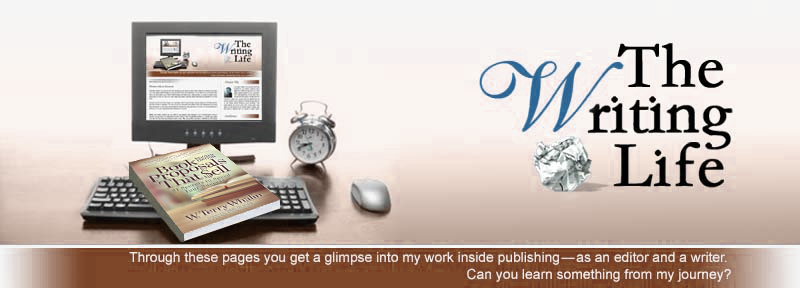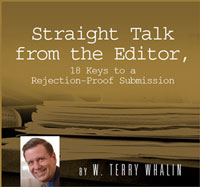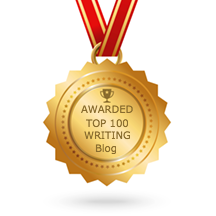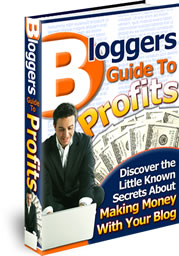Why Self-Publishing Is NOT "Easy"
Publishing a book has never been easier. Almost everyone has a keyboard and a computer with the ability to crank in words and produce a manuscript—whether nonfiction or fiction. Authors struggle to find a literary agent and a traditional publishing deal. They get tired of crafting an excellent product, the waiting, and the rejection letters. Instead they decide to self-publish because that direction looks easy.
For over 20 years, I've been reading about publishing, writing and working in this business as an editor and writer. I encourage you to read this recent article from Jane Friedman, former editor at Writer's Digest and publishing expert. I want to quote a brief section of Friedman's article:
“Back in 2012, there were many headlines about the tremendous growth in self-publishing output as demonstrated by the increase in ISBNs used by indie authors.
Since then, Bowker—the agency that issues ISBNs in the United States—has continued to release annual stats that still show growth in the sector, but these numbers always come with important caveats, including:
- Bowker’s figures don’t reflect all of the self-publishing activity out there. They can’t count books that don’t have ISBNs, and a considerable volume of self-pub titles are published and distributed without ISBNs.
- Bowker’s counts are for ISBNs, not book titles. A single book title may use several ISBNs (e.g., one for the print edition, another for the ebook edition, and so on).
According to Bowker, ISBNs for self-published titles in 2015 reached 727,125, up from 599,721 in 2014, representing a 21% increase in one year. The increase since 2010 is 375%.
But I think more important is where the growth occurred. Bowker’s numbers indicate more authors are using Amazon’s CreateSpace, which is free to use; older, fee-based self-publishing services are falling out of favor. Here’s a selected glimpse (again, remember these are ISBN counts coming out of each service per year):
- CreateSpace titles in 2010: 35,693
- CreateSpace titles in 2015: 423,718 (+1,087%)
- Author Solutions titles in 2010: 41,304
- Author Solutions titles in 2015: 23,930 (-42%)
The only area of Author Solutions’ business that saw an ISBN increase in 2015 is WestBow, the Christian self-publishing imprint marketed through Thomas Nelson. Note that Penguin Random House, which used to own Author Solutions, sold it off in January 2016, unloading what was probably seen as an albatross.”
Are these statistics a surprise to you?
The increase of over 1,000% percent on CreateSpace was startling.If you publish through CreateSpace, your book is only on Amazon and not available in other formats.
The increase of over 1,000% percent on CreateSpace was startling.If you publish through CreateSpace, your book is only on Amazon and not available in other formats.
If you decide to self-publish, understand several facts: First, you are establishing a world-wide sales record of your publishing efforts. Traditional publishers and literary agents look at this information to decide if they are going to publish your next book or take you on as a client. Second, you are in complete control of your work which may feel easier but also you are responsible for all the details of the book creation (excellent cover design, well-written writing, distribution and sales).
Yes the creation of books has never been easier. Here's the reality that few people will tell you: making the book is easy but getting people to purchase the book will take hard work and persistent effort. If you have developed relationships with people in your target market and connect with them often. More specifically if you connect to your audience through an email list and speaking to them face to face, then yes you can sell your book.
No matter what I write, a number of you are going to take the leap into self-publishing. Here's several action steps if you go this route:
1. Work with an experienced editor to create an excellent book.
2. Work with professional cover designers and people to format and produce a book where every detail looks like something from one of the big five traditional publishers. This means including elements like endorsements and words on the spine of the book (including a publishing logo on the bottom of that spine).
3. Keep working consistently to grow your audience. Get my free ebook, Platform-Building Ideas for Every Author and trying new avenues to market and sell your book.
4. Continue to learn all you can about publishing. Get a copy of my Book Proposals That Sell and study the publishing insights in this book.
5. Never give up on your book. As the author, you have the greatest interest and passion for your book. This statement is true no matter whether you are traditionally published or self-publish. Always be looking for new opportunities to write or speak about your book.
This last point is something that I try and model with my own books. For example, in the header of my twitter profile, you see my Book Proposals That Sell book which is only available from me. My Jumpstart Your Publishing Dreams book is in my bio for my recent Southern Writer magazine column. And finally, I continue to do radio interviews for my Billy Graham biography which came out over two years ago. Just follow this link to see some of the recent interviews and listen to them.
Have you self-published? Was it a good experience and “easy?” I look forward to reading your comments.
Labels: Author Solutions, Book Proposals That Sell, cover design, CreateSpace, editor, Jane Friedman, Jumpstart Your Publishing Dreams, literary agents, self-publish, traditional publishing

























2 Comment:
Terry, the more research I do, the more the answer for me seems to be to self publish. Unless my writing is a slam dunk, it's going to be many submissions and lots of time to find any agent who will want to represent a no name such as myself. Not to mention the advances publishers offer aren't that great, my rights to the book are taken from me and I still have to market the book. With self publishing, there are less hoops to jump through and I can make it a quality work and have control over the design and publishing, not to mention the profits. To me it is as if getting traditionally published is like the mayor giving you the keys to the city, while self publishing gives you the stakes to the open frontier. Am I missing a side to this?
Katie,
There are a lot of issues with self-publishing that do not seem obvious but are critical to your success as an author. The average self-published book sells less than 200 copies during THE LIFETIME of the book. Do you have an audience for your target reader? Do you know how to reach that target reader? Do you have an email list? To get an agents or a traditional publisher you will need a platform or reach to your audience.
Also credibility is an issue. Look the CreateSpace numbers in this post--and if you use them you are only on Amazon. I acquire books for Morgan James Publishing, New York publisher and we distribute our books into 98% of the bookstores in North America including the brick and mortar bookstores. Self-publishers do not sell into brick and mortar bookstores. Amazon is a big customer of Morgan James but only 24 % of our overall business so if you go with them--you are missing 76% of our market reach. To me, this difference is HUGE. Please reach out to me if I can help you. I'm looking for good books and sending contracts to authors every week.
I hope this helps you make a wise decision. I've spoken with authors who have spent vast amounts of money with self-publishers and their books are only sold online.
Terry
Post a Comment
That's the writing life...
Back to the home page...